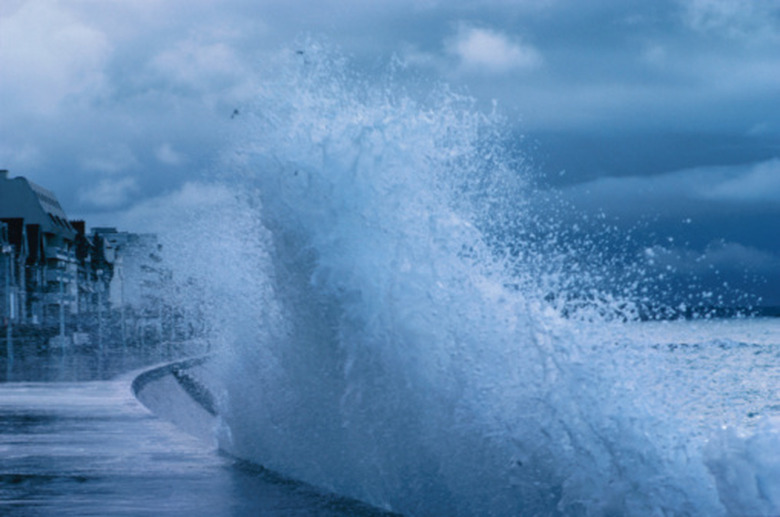Types Of Seawalls
Seawalls protect coastal areas, particularly those near human habitations, from heavy seas. They can be immensely effective; in Pondicherry, in eastern India, seawalls built in the 18th century by colonial French engineers withstood the catastrophic power of the 2004 Indian Ocean earthquake and the resulting tsunami. While the town was tragically affected and experienced some fatalities, the recorded fatalities occurred in areas beyond the protection of the seawall.
Curved Seawalls
Curved Seawalls
Curved seawalls mirror the shape of a wave as it moves towards land. The sweeping design dissipates the impact of the wave by deflecting it upwards, away from the bottom of the structure. These walls are usually made from poured concrete and are designed to reduce scour — the removal of sediment from around a structure, which weakens it — at the base of the wall.
Gravity Seawalls
Gravity Seawalls
Seawalls that rely on heavy materials to give them stability are known as gravity seawalls. Gravity seawalls are built in areas where strong soil runs right up to the coastline; the seawall is anchored, using this strong soil as a foundation. These walls are susceptible to shearing around the base, a process in which internal components of a structure move across each other as a response to stress. Gravity seawalls usually have extra reinforcement around the base to counteract shearing.
Steel Sheet Pile Seawalls
Steel Sheet Pile Seawalls
Steel sheets, interlocked and anchored deeply into the ground, are frequently used as seawalls in areas less intensively battered by the sea. Steel sheet pile seawalls are usually anchored both into the ground beneath them and to a bank of earth or bluff behind them. The weight of this earth acts as a reinforcement to the wall; water retained in this bank of earth can be drained through openings in the wall.
Concrete Block and Rock Walls
Concrete Block and Rock Walls
Walls constructed from concrete blocks and rocks mounted on a manmade slope are generally lower-cost operations than other seawall types, but they do not last as long. A mound made of rubble and rock is constructed, and heavy boulders made of concrete or stone are anchored into position. The shape of the slope dissipates the force of the wave by guiding it up a gentle slope, while the irregular boulders with gaps between them absorb the force by dividing the main wave into lots of smaller channels.
Cite This Article
MLA
Salgado, Julia. "Types Of Seawalls" sciencing.com, https://www.sciencing.com/types-seawalls-8394254/. 24 April 2017.
APA
Salgado, Julia. (2017, April 24). Types Of Seawalls. sciencing.com. Retrieved from https://www.sciencing.com/types-seawalls-8394254/
Chicago
Salgado, Julia. Types Of Seawalls last modified March 24, 2022. https://www.sciencing.com/types-seawalls-8394254/
